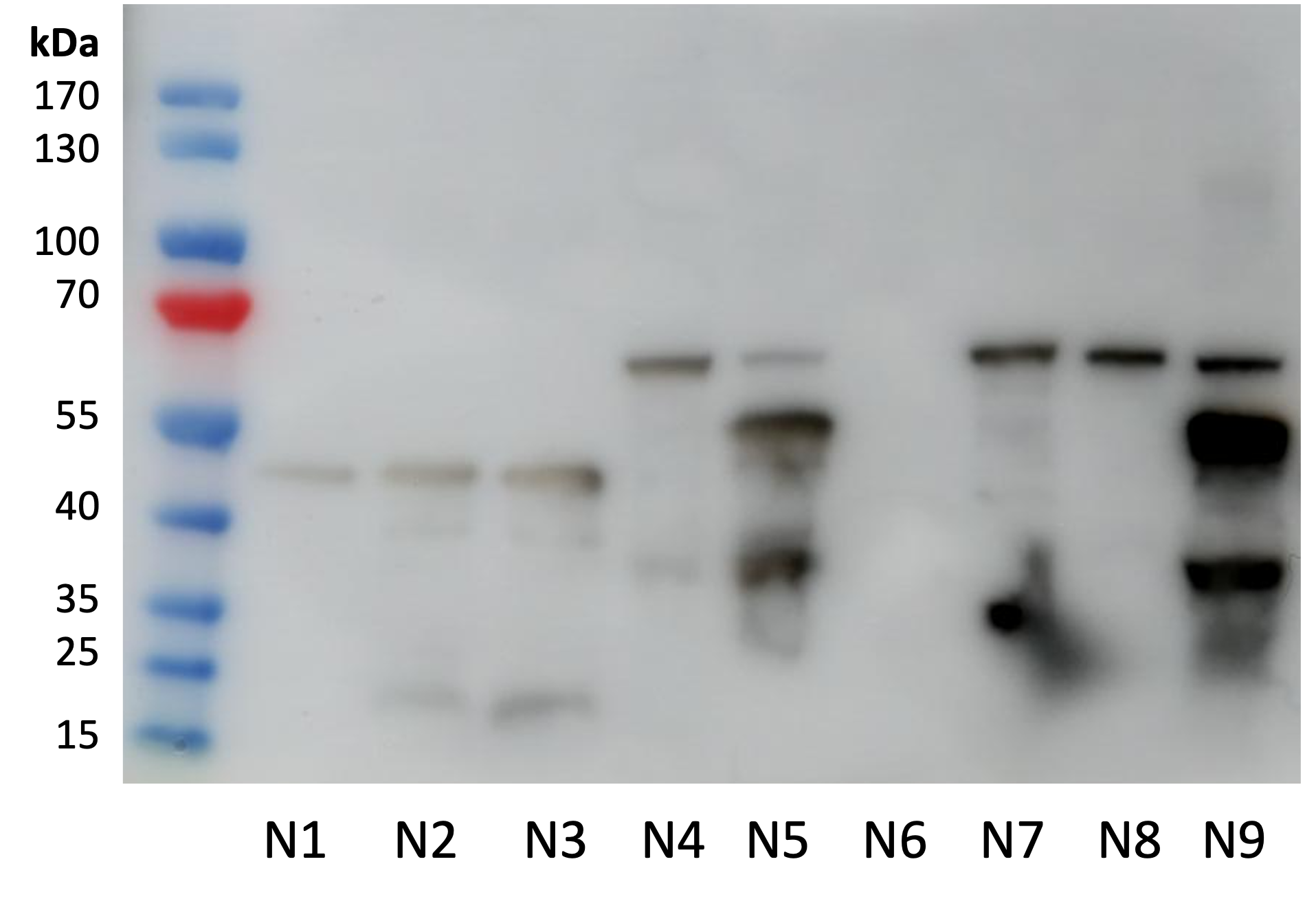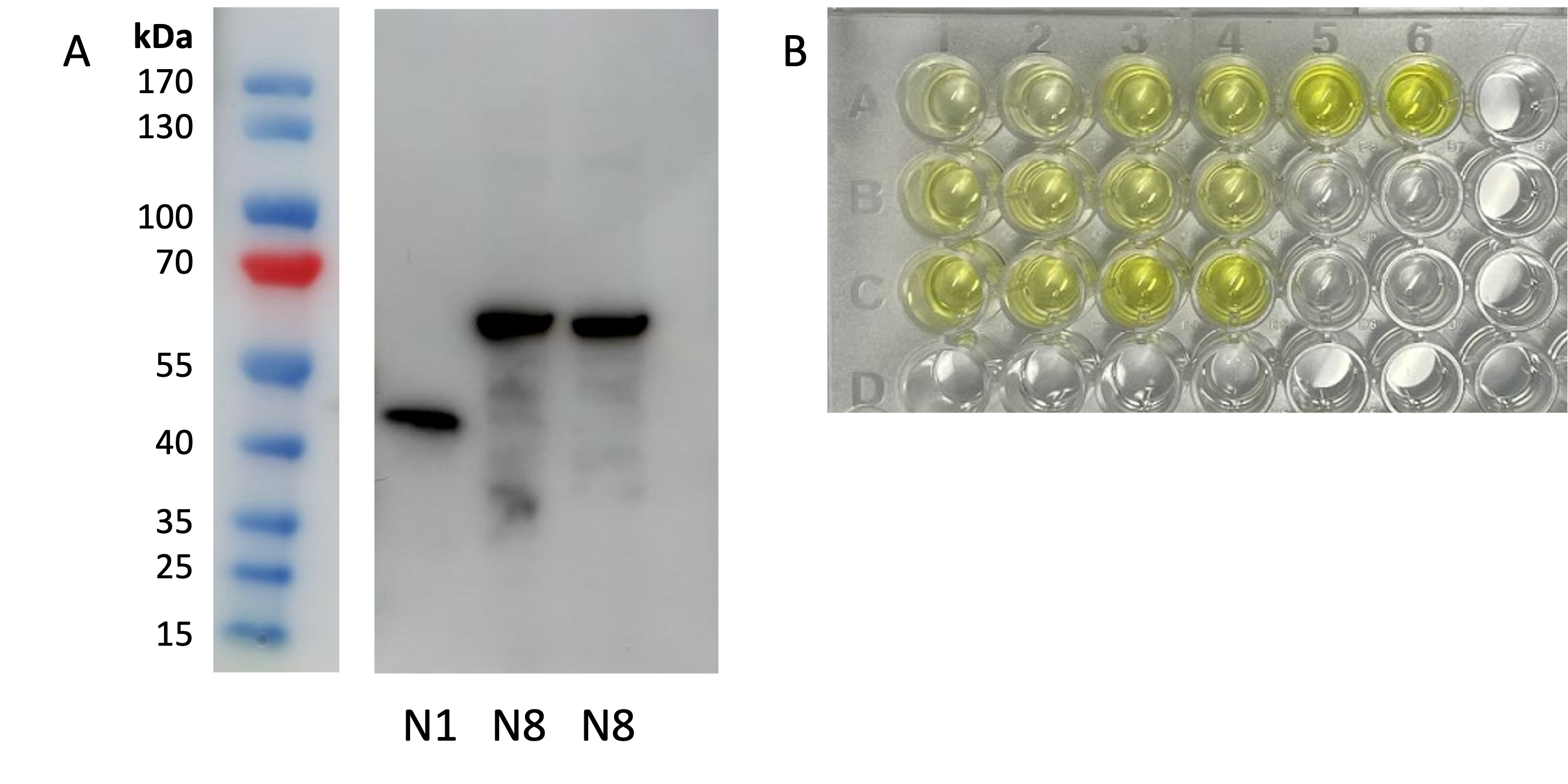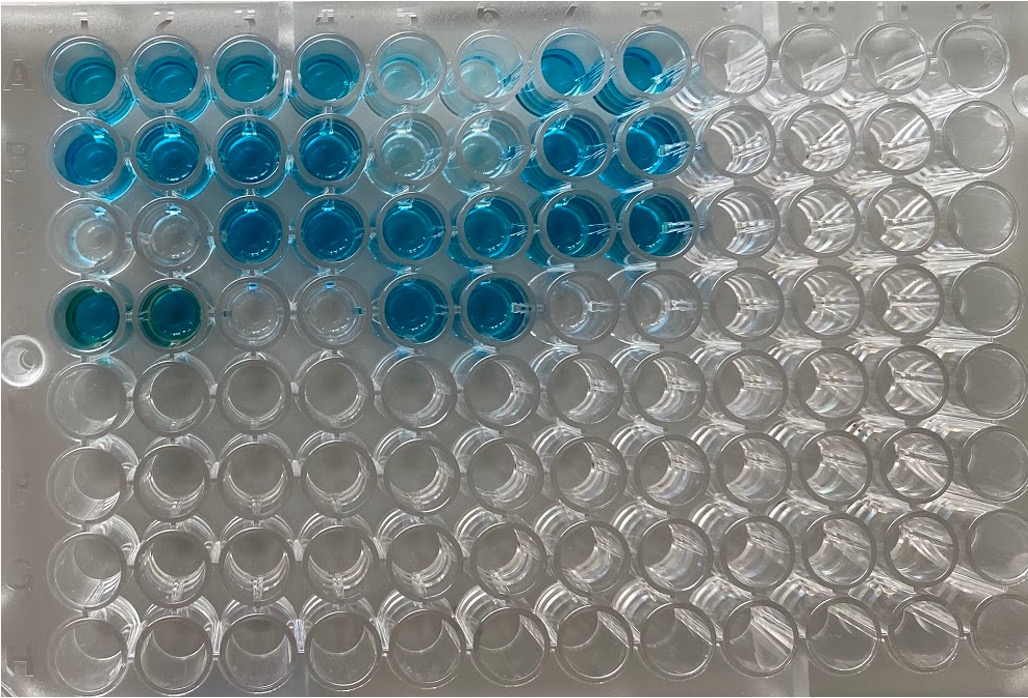Part:BBa_K4387982
Bivalent nanobody expression with the HlyA secretion signal (biv. VHH#3E)
The hemolysin A secretion machinery is a one-step secretion system (T1SS), originally isolated from uropathogenic E. coli strains. [1] It comprises three main peptides, the inner membrane proteins HlyB and HlyD, and the outer membrane protein TolC. Together, these three proteins build a continuous channel through which originally the HlyA toxin is secreted in a one-step manner. Scientists have identified the secretion signal and were able to secrete various proteins of different sizes with this secretion machinery. [1]
This composite part contains an anti-TNFα nanobody fused to a myc-tag and the HlyA-tag required for the secretion with the hemolysin A secretion system BBa_K4387987. The expression of the bivalent nanobody is under the control of the inducible pBAD system, followed by the T7 RBS. The myc-tag was required for the characterization of the secretion and functionality of the nanobody. The nanobody inserted in this part is the bivalent candidate VHH#3E. [2] For more information about the nanobody go to its respective part page (BBa_K4387992).
Sequence and Features
- 10COMPATIBLE WITH RFC[10]
- 12INCOMPATIBLE WITH RFC[12]Illegal NheI site found at 1205
- 21INCOMPATIBLE WITH RFC[21]Illegal BglII site found at 2091
Illegal BglII site found at 2670
Illegal BamHI site found at 1144 - 23COMPATIBLE WITH RFC[23]
- 25INCOMPATIBLE WITH RFC[25]Illegal NgoMIV site found at 1660
Illegal AgeI site found at 979 - 1000COMPATIBLE WITH RFC[1000]
Characterization
Western blot

We double transformed the common lab strain E. coli MC1061 with the high copy plasmid containing this composite part required for induced nanobody expression, and the medium copy number plasmid containing the composite part BBa_K4387987 required for the secretion system. Liquid overnight cultures of the transformed strain were grown and induced by adding the appropriate amount of arabinose. On the next day, the cells were centrifuged, and the supernatant was run on a gel. To see if nanobodies of the correct size have been secreted, we conducted a Western blot detecting the myc-tag fused to the nanobodies with anti-myc antibodies (Figure 1).
As seen in figure 1, we received a band, labelled as N5, with the size of approximately 60 kDa which fits the expected size of the bivalent nanobody candidate VHH#3E together with the myc-tag and HlyA-tag. We can therefore assume that the bacteria were able to secrete whole nanobodies.
ELISA
To prove that the secreted nanobodies not only have the correct size but are also able to elicit their TNFα-binding abilities, we performed an ELISA (Figure 2). Adalimumab, a monoclonal anti-TNFα antibody already used in the clinics to treat IBD patients, served as a positive control (wells D1-2), and a sybody against a membrane protein was the negative control (wells D3-4). We could show that the transformed E. coli MC1061 is able to secrete functional anti-TNFα nanobodies. Successful binding of the bivalent nanobody VHH#3E is seen in wells B5-6. However, compared to the same purified nanobody (wells B7-8), it seems that the binding capacity of the secreted nanobody is reduced. Further investigation is necessary to figure out what might have caused the reduction in the binding affinity of the bivalent nanobody to TNFα.
Alternative Chassis

We also double transformed the probiotic strain E. coli Nissle 1917 with both plasmids, but containing two different nanobodies (N1: BBa_K4387996, N8: BBa_K4387989) and performed the same experiments as described above. Figure 3A shows the successful secretion of both nanobodies and figure 3B the binding capability of the secreted nanobodies to TNFα. Hence, it's possible to integrate this whole genetic circuit into other E. coli strains. It is important to note that the strain is required to endogenously express the protein TolC, which is necessary for the HlyA channel formation.
Additionally, we characterized the secretion of the monovalent nanobody VHH#2B (BBa_K4387996) with another inducible promoter, pNorVβ BBa_K4387000. This alternative promoter senses nitric oxide (NO) and as a response to its binding, expresses the nanobody VHH#2B. This data is found in the respective composite part BBa_K4387978.
References
- [1] Ruano-Gallego, D., Fraile, S., Gutierrez, C. et al. Screening and purification of nanobodies from E. coli culture supernatants using the hemolysin secretion system. Microb Cell Fact 18, 47 (2019). https://doi.org/10.1186/s12934-019-1094-0
- [2] Silence, Karen, Lauwereys, Marc, De Haard, Hans, et al. "Single domain antibodies directed against tumour necrosis factor-alpha and uses therefor", Int. Publication Number: WO 2004/041862 A2, 21 May 2004
| None |

